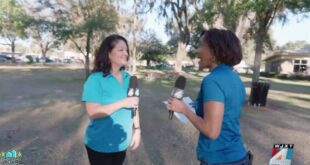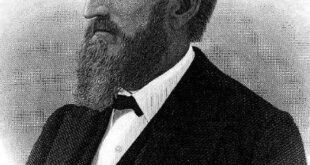The Legacy of Carver High School Lives On at the Central-Carver Museum
The rich history of Carver High School in Gadsden, Alabama remains etched in the memories of those who were fortunate enough to experience it firsthand. More than five decades have passed since the final class graduated, and nearly half a century has gone by since the school building was demolished. However, since 2006, the Central-Carver Museum has served as a keeper of that history, displaying cherished mementos and paying tribute to the individuals who were shaped by their experiences at Carver High.
Located at 1030 Tuscaloosa Ave. in Carver Square, adjacent to the Carver Community Center, the museum showcases a collection of artifacts that tell the story of Carver High School. Within its walls, visitors can find graduating class photos, a band uniform, a coach’s jacket, athletic trophies, diplomas, and yearbooks. Newspaper clippings meticulously document memorable events and notable personalities, while a dedicated section mourns Carver graduates who bravely served in the armed forces and did not return home from warfare. Countless photographs adorn the museum, capturing the essence of campus life and proudly displaying the honor rolls of Carver graduates who achieved success and prominence in various fields, including academics, athletics, business, religion, science, and the legal and medical professions.
Claude Burnett, a member of the Class of 1961 and the chairman of the board of the Central-Carver Foundation, extends an open invitation to everyone to visit the museum and learn. He encourages visitors to come with open minds, ask questions, and be prepared to uncover the truth. The museum aims to provide an authentic portrayal of Carver’s history, ensuring that the contributions of its alumni echo through the halls of time.
Carver High School was established in 1936, replacing its predecessor, Central High School, and becoming Gadsden’s first 12-year school exclusively for Black students. Over 1,000 students eagerly entered its doors when they opened. Constructed with funds from the New Deal Public Works Administration, the original building boasted 26 classrooms, an auditorium, and a lunchroom. In 1953, an elementary school section for grades 1-6 was added, followed by the construction of a band room, gym, and shop in the latter part of the decade. As the 1960s rolled in, the school witnessed the construction of new facilities, including a lunchroom, a home economics department, and a junior high wing.
However, in 1971, Carver High School met its end as a result of the civil rights movement’s primary objective: integration. The school closed its doors, marking a significant moment in history. From 1975 to 1977, Carver temporarily housed an elementary school, which saw predominantly white enrollment, according to Burnett. Nevertheless, the main building was dismantled in December 1977. Burnett openly shares the truth behind the closure, explaining that Carver was initially supposed to become an elementary school that would accommodate students from the surrounding area. However, the powers-that-be decided against it and chose to close Carver instead. The rest, as they say, is history.
The roots of the Central-Carver Museum can be traced back to a Black History Month exhibit in 2003 at Gadsden State Community College. Victor Ficker, the college’s president at the time, provided Bettye Knowles, the founding director of the museum, with a space to set up the exhibit. After its stint at the Gadsden Senior Activity Center, the exhibit eventually found its permanent home at the present museum location. The support of Mayors Steve Means and the subsequent mayoral administrations has been unwavering, ensuring a strong relationship between the city and the museum.
Recent news highlighted the collaboration between the city and the Gadsden Museum of Art to erect two monuments at the Central-Carver Museum. These monuments will bear the names of the students who would have comprised Carver’s Class of 1972, but were forced to make the transition to either Gadsden or Emma Sansom, the two high schools in the city. It is important to note that the idea for these monuments did not originate from the museum itself. Ruth Moffatt, Gadsden’s director of equity, inclusion, and diversity, spearheaded the initiative as a step towards recognizing and claiming Gadsden’s rightful place in the civil rights movement’s history. Burnett assures that despite some criticism, the museum fully supports Moffatt’s vision and is actively involved in the project.
The Central-Carver Museum maintains a strong working relationship with the Gadsden Museum of Art and is an esteemed member of the Museum Association of Alabama. The museum strives to present itself in a manner that fosters goodwill both statewide and nationwide. Visitors from all walks of life are welcomed and encouraged to explore the history of Carver High School, gaining insights into the numerous contributions of its alumni throughout the country.
The museum’s commitment to education remains steadfast, mirroring the standards set by its founding director, Bettye Knowles, and the founding chairwoman, Kathryn Barrett. They emphasized the value of Carver High School’s role in Gadsden’s history, recognizing its inseparable connection to the city’s past. While many graduates have achieved recognition and are well-known figures, there are countless others who deserve recognition for their accomplishments, including James Hood, a member of the Class of 1961, who played a pivotal role in integrating the University of Alabama. The museum proudly showcases his achievements, including the Ph.D. he earned from the university in 1997. Additionally, the museum highlights the achievements of other lesser-known figures who gained fame outside of Gadsden, such as the acclaimed artist/sculptor Nathaniel “Sonny” Bustion and scientist Curtis Ross, who led a team credited with saving Lake Erie from devastating pollutants in the late 1960s.
Looking towards the future, the Central-Carver Museum has plans to upgrade its lighting system without compromising the integrity of the exhibits. Assistance is being sought in securing grant funds to support these endeavors. Additionally, the museum aims to revamp certain aspects of its displays, focusing on local individuals like Coach George Baker and showcasing the work of local artists.
Burnett upholds the values instilled by Knowles and Barrett, emphasizing the importance of maintaining a clear plan for progress. The founders stressed the need for individuals who prioritize the interests of the museum over their personal agendas, creating a harmonious environment within the board of directors. The museum operates with the belief that its purpose is to serve the community and preserve the legacy of Carver High School, rather than seeking personal recognition.
The museum currently operates from 11 a.m. to 3:30 p.m. on Tuesdays through Thursdays. However, visitors can arrange for special after-hours access by calling the provided phone numbers on the door. The Central-Carver Museum relies on the generosity of volunteers and donations to support its operations. Admission is free, as the museum seeks to ensure that everyone has the opportunity to explore and learn about Carver High School.
For more information, interested individuals can reach out to the museum by calling 256-549-4742 or visiting their website at https://centralcarver.org.
 Mind Uncharted Explore. Discover. Learn.
Mind Uncharted Explore. Discover. Learn.



